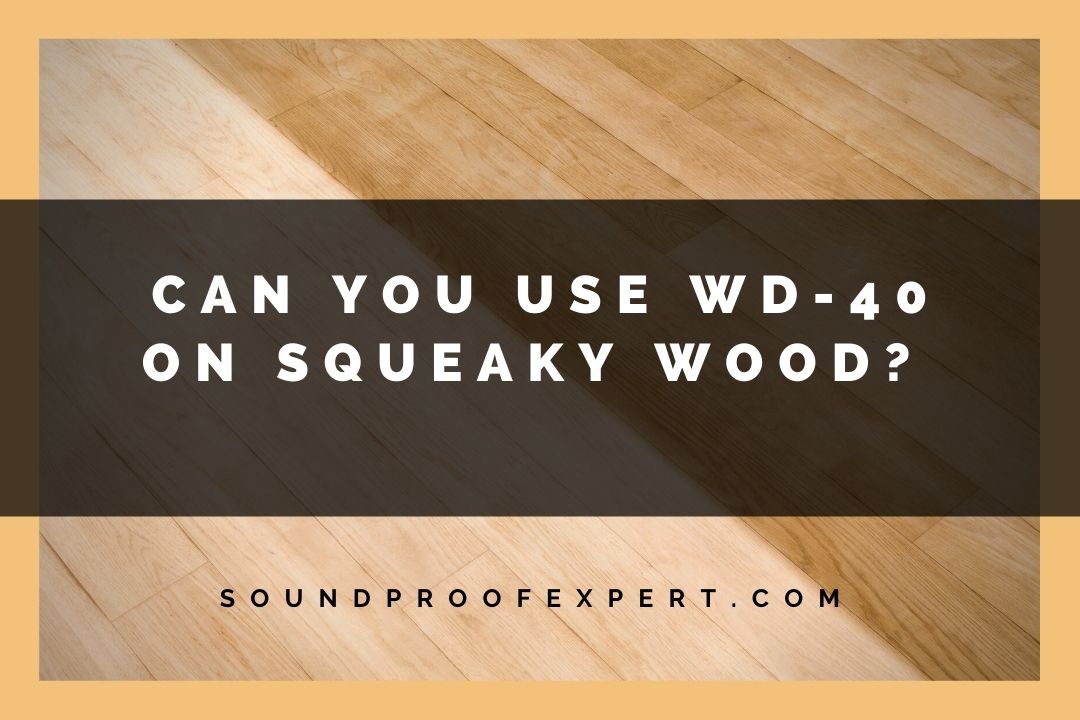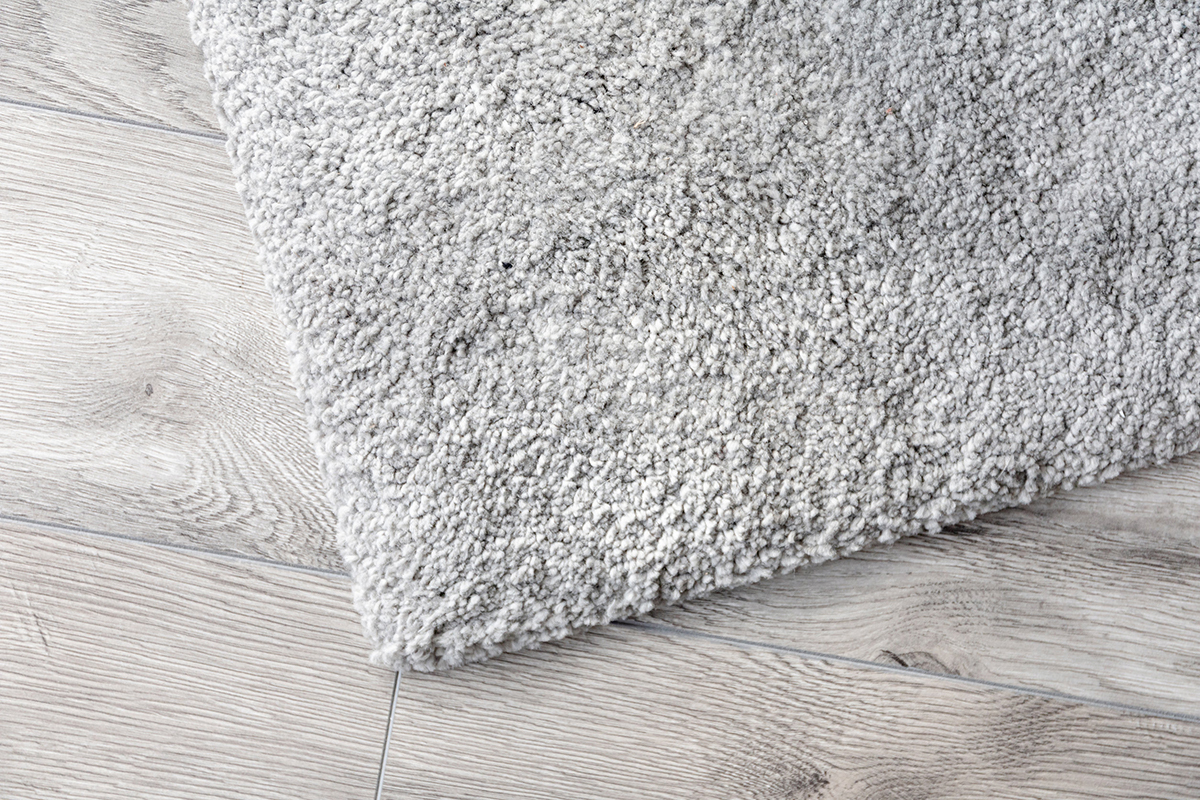
WD-40 is a near-permanent fixture in many garages and workshops around the country for many reasons. It’s a powerful lubricant used in many unorthodox applications ranging from cleaning furniture to kick-starting vehicles. Can you use it on squeaky wood?
You can use WD-40 on squeaky wood if the cause of the noise is friction between floorboards. Since the product is a lubricant, it’ll stop the friction. However, you’ll have to constantly reapply the product after it dries. WD-40 won’t work for other causes of squeaky floor sounds.
In the rest of the article, I’ll take a closer look at the benefits and risks of using WD-40 as a remedy for a squeaky wooden floor.
Using WD-40 on Squeaky Wood: All You Need To Know
There’s a number of people who advocate for the use of WD-40 on squeaky wood. You can take a look at how this method works on this YouTube video:
That said, this is a relatively controversial option, and many people have argued for and against this DIY fix over the years, leaving newbie DIY enthusiasts confused.
However, the reality is that WD-40 will work on squeaky floors – but only if the cause of the noise is friction-related. Spraying some of it into the space on the affected part of the floor can stop the friction and the accompanying squeaky noise.
Advantages of Using WD-40 To Stop Wood From Squeaking
- It’s readily available. You probably have a few cans of the product in your garage right now. If you don’t, you can get one from Amazon.com right now. The WD-40 Smart Straw Spray is a popular choice.
- It’s easy to use. The only thing you need to do when using WD-40 to fight wood squeak is to ensure it gets in between the floorboards. Ensuring this is easy – pushing the nozzle down to the affected surface before spraying gets the job done.
- It’s a cheap solution. You can find a can of WD-40 for extremely affordable prices, and you can use each can for a long time.
Disadvantages of Using WD-40 To Stop Wood Squeak
- It’s a one-dimensional solution. As we’ve mentioned above, WD-40 will only work if the cause of the squeak is friction. However, in most cases, wood squeaks are caused by gaps between floorboards, loose floorboards, and space between the joist and the subfloor. WD-40 won’t do anything for you in any of these situations.
- Other lubricants can achieve similar results. If you have some vegetable oil at home, you can use it to solve friction-induced squeaks. WD-40 has no special properties that should make it the lubricant of choice in that situation. If you already have some lubricants at home, you don’t need WD-40.
- It can cause slips. The floor area sprayed with WD-40 will remain slippery for a while. It’s a slip-hazard unless you thoroughly wipe down the surrounding area. Wiping off the oil will be more difficult if you’ve had to work over a large area.
- It’s flammable. If you use open fires anywhere near the wood floor treated with WD-40, there’s a risk of a fire accident.
- It’s smelly. WD-40 doesn’t have the most pleasant smell, and some people may find it irritating.
- You’ll need to repeat the application. The WD-40 will wear out after a while. When it does, you have to repeat the process all over again.
- It can stain the floor. Depending on the type of wood, WD-40 may discolor any parts of your wood floor it touches. Wiping off the substance can solve this problem, but it may not be enough.
How To Apply WD-40 on Your Wood Floor
Looking at the pros and cons above, it’s clear to see that WD-40 shouldn’t be your first option when you’re looking for a remedy to deal with your squeaky floor. However, if you already have it on hand and you’re certain that the cause of the squeak is friction, you can achieve it by doing the following:
- Clean the affected area thoroughly.
- Hold the WD-40 can’s nozzle as close to the floor as possible, aiming for the space between the two floorboards.
- Spray small bursts into the space.
- Using a piece of clean cloth, nudge some of the excess WD-40 around the space into it.
- Clean off any excess pool of WD-40 immediately.
- Air the area to dry.
- Keep candles and other open flames away from the area.
Alternatives to WD-40 When Dealing With Squeaks in Your Wood Floor
If you don’t want to risk using WD-40 to deal with your wood floor squeak, there are a few other alternatives you can use depending on the cause of the squeak.
Cover the Floor With a Thick Rug
Small squeaks can be hidden by covering the floor with a thick fluffy rug. The rug will break the weight of the impact as people walk across the floor and suppress any sounds made by the floor. You can use this approach when there’s no major structural defect on the floor.
If there is a major structural issue, you’ll need to fix it as soon as possible to reduce the risk of the problem worsening.
Fill Floor Gaps With Adhesive
If you notice a sizable gap between the top of your joist and the subfloor’s underside, WD-40 won’t solve the problem. In this scenario, you can stop the squeak by filling the floor gap with some heavy-duty adhesive. Consider using a caulking gun to ensure the adhesive is delivered directly to the affected area.
Fortify a Warped Joist With a Board
A warped or twisted floor joist will lead to squeaking sounds because it’ll leave space between the joist and the plywood subfloor. You can fix the problem by installing a 2×4 board along the joist. Smear some construction adhesive on the side of the board, then press it against the joist. Use 3-inch (762 cm) drywall screws to complete the process.
Final Thoughts
WD-40 is a versatile lubricant with a wide variety of uses. However, it will only work for wood squeaks if the problem is caused by friction.
Even then, tons of other products can solve the same problem – including baby oil or talcum powder – most of which aren’t flammable in the way that WD-40 is. You can also choose to hide the squeak with a rug.
Squeaks caused by structural issues need a more holistic approach targeted at dealing with the root cause of the problem.

